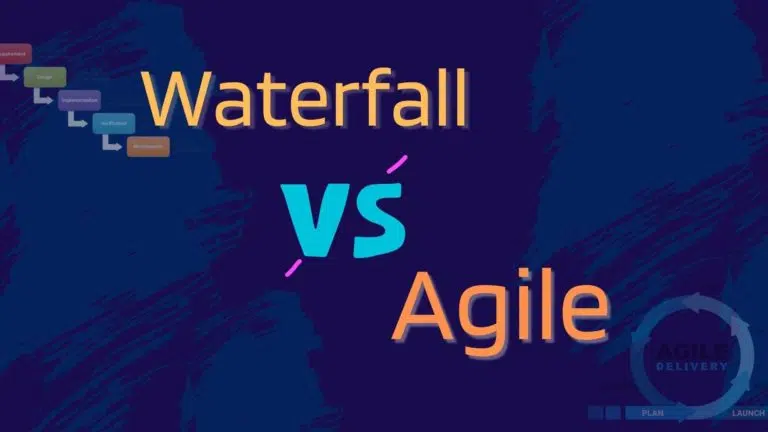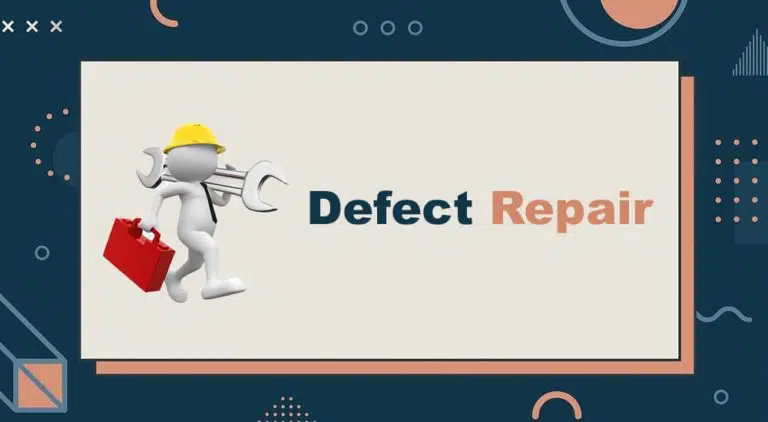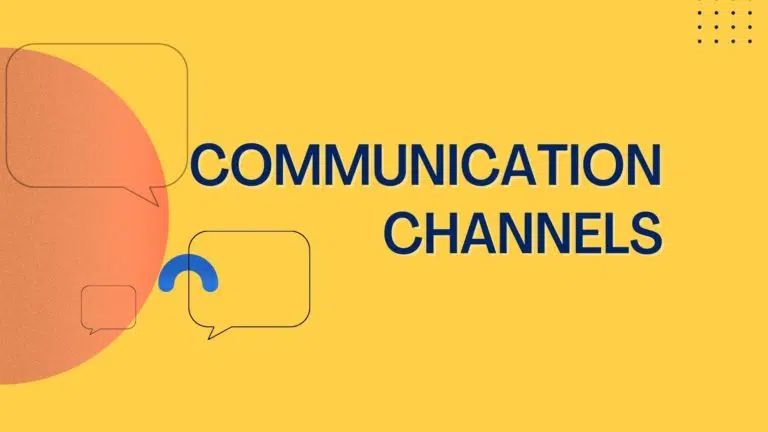A bonded and connected team performs with better efficiency and is more productive.
A productive team is motivated, dedicated, and transparent. A project manager has many tools to ensure the team is productive, including the “Team Charter.”
Team charter helps the project manager build a robust, motivated, high-performing team with a shared understanding.
Let’s get into the details.
What is a Team Charter?
A team charter is a project management document that provides the team’s working principles. It ensures that the team works collaboratively and creates a positive working environment so all members will feel motivated and perform at their best.
It is a formal agreement outlining a team’s purpose, goals, roles, responsibilities, and operating guidelines. You can create it at the beginning of a team’s formation to provide a clear understanding of the project’s mission and objectives.
The team charter outlines why the team has been brought together, what they are supposed to accomplish, and the resources and constraints in which they will work. It is a tool for aligning team members, promoting communication, and ensuring everyone is on the same page regarding their purpose.
Team charter can also include the ground rules establishing rules to interact and respect boundaries.
By providing clear guidelines, the team charter sets a model for team members to follow and creates a positive and engaging environment.
The format, structure, and level of detail in the project charter depend on the organization and the team. Some organizations have detailed team charters, and others have a few lines of charter with key elements.
If unavailable, you can use your organization’s team charter or create your own from scratch.
What is Included in a Team Charter?
A team charter can include many elements to outline a team’s purpose, goals, roles, and operating guidelines.
Some common elements of a project charter are:
- Team Name: This provides a name with which to identify the team.
- Mission Statement: This defines the purpose and reason for the team’s existence.
- Vision Statement: This describes the desired future state or long-term goals that the team aims to achieve.
- Objectives and Goals: These outline specific, measurable targets that the team intends to accomplish.
- Scope and Boundaries: These define the limits and boundaries of the team’s authority and responsibilities.
- Roles and Responsibilities: These outline the team members’ roles and responsibilities.
- Stakeholders: These are key internal and external stakeholders and those interested in the team’s activities.
- Decision-Making Processes: These describe how decisions will be made within the team (e.g., the method for reaching a consensus or resolving conflicts).
- Communication Plan: This outlines communication within the team and specifies preferred channels, frequency, and key contact points.
- Meeting Guidelines: These establish rules and expectations for conducting team meetings (e.g., frequency, duration, and agenda-setting).
- Conflict Resolution: This defines procedures for identifying, addressing, and resolving conflicts among team members.
- Recognition and Rewards: These specify how team members will be recognized and rewarded for their contributions and achievements.
- Monitoring and Evaluation: This describes how the team’s performance will be monitored and evaluated (e.g., success criteria).
Sometimes, ground rules are also a part of the team charter, but it is recommended to have them separately to put more emphasis.
What is the Importance of Team Charters?
The team charter is important for the following reasons:
It Gives Team Members Responsibility
The team charter is jointly created or distributed to every team member to go through and understand it. It helps get team members’ buy-in, and they will know their roles and responsibilities and perform well.
A team charter brings all stakeholders together by making them work in the same direction.
Improves Clarity and Motivates Team Members
By clarifying the roles and responsibilities, the team charter removes the ambiguity in schedule and task assignments, which motivates the team members to perform well.
All team members know their roles, project objectives, and long-term organizational goals, which motivates team members.
Builds a Robust Team
The team charter clarifies the roles and responsibilities, motivates team members, and ensures the team cooperates to achieve project objectives. It helps build a cohesive, connected, and robust team that performs efficiently.
How to Create a Team Charter
Creating a team charter is crucial in establishing a clear direction, purpose, and expectations for a team.
You can follow the following five-step guidelines to create your team charter:
Step 1: Define the Purpose and Goals
Define the team’s purpose and goals.
To do so, you can answer the following questions:
- Why does the team exist?
- What is the team trying to achieve?
- What are the key objectives and deliverables?
Step 2: Identify Team Members and Roles
List the team members and define their roles and responsibilities. Include each member’s expertise, skills, and contributions. This section helps establish accountability and ensures that everyone understands their role in achieving the team’s goals.
Step 3: Establish Team Norms and Values
Define the values and norms guiding the team’s behavior and interactions.
This may include:
- Communication Guidelines: How and when will the team communicate? Which tools will be used to do so?
- Decision-Making Processes: How will decisions be made within the team? Will it be by consensus, voting, or another method?
- Conflict Resolution: Outline a process for resolving conflicts constructively.
- Meeting Protocols: Specify how meetings will be conducted (e.g., frequency, agenda creation, and participation expectations).
Step 4: Set Performance Metrics and Milestones
Establish measurable performance metrics and milestones that will be used to track the team’s progress.
This could include:
- Key Performance Indicators (KPIs): Identify KPIs and specific metrics that will gauge the team’s success.
- Milestones: Break larger goals into smaller, achievable milestones with deadlines.
- Evaluation Criteria: Define how the team’s success will be assessed via individual and collective performance.
Step 5: Review and Revise
A team charter is a living document that should be revisited and revised periodically. Schedule regular reviews to ensure that the team charter remains relevant and effective. As the team evolves or faces new challenges, updates to the charter may be necessary to reflect changing priorities, goals, or team dynamics.
Tips for Creating the Project Charter
- Collaborative Creation: Involve all team members in creating the charter to ensure collective ownership and commitment.
- Clear Communication: Communicate the team charter to all members and ensure that everyone understands and agrees to its content.
- Accessibility: Keep the team charter easily accessible to all team members. Consider sharing it on a collaborative platform or in a shared document.
The team charter provides guidance and promotes a sense of unity and shared purpose among team members. Regularly revisiting and updating the charter helps the team stay aligned and adaptable to changes.
Team Charter Template
1. Project Overview:
- Project Name: Your Project Name
- Project Purpose/Objective: Briefly describe the project’s purpose and objectives.
2. Team Members and Roles:
| Name | Role | Expertise/Area of Responsibility |
| Team Member 1 | Role 1 | Area of expertise |
| Team Member 2 | Role 2 | Area of expertise |
| Team Member 3 | Role 3 | Area of expertise |
| Team Member 4 | Role 4 | Area of expertise |
3. Team Norms and Values:
- Communication:
- Regular team meetings will be held every (frequency) to discuss progress and address concerns.
- All team members will use (communication tools) for project-related communication.
- Decision-Making:
- Decisions will be made through a (consensus/voting/other) approach, depending on the nature of the decision. (Specify any specific decision-making protocols.)
- Conflict Resolution:
- Conflicts will be addressed openly and constructively, following the (conflict-resolution process outlined in the team charter).
- Meeting Protocols:
- Agendas will be distributed (X days) before each meeting.
- Meetings will start and end on time to respect everyone’s schedules.
4. Performance Metrics and Milestones:
- Key Performance Indicators (KPIs):
- (Specify KPI 1)
- (Specify KPI 2)
- KPIs will be tracked and reported on a (frequency) basis.
- Milestones:
- (Specify Milestone 1 and deadline)
- (Specify Milestone 2 and deadline)
5. Health, Safety, and Environmental Guidelines:
- The project will adhere to all relevant health, safety, and environmental regulations and standards.
- Regular safety audits will be conducted to identify and address potential hazards.
6. Review and Revision:
- If necessary, the team charter will be reviewed and revised every (X months).
- The team will discuss and agree upon any proposed changes to the charter.
Team Charter Example
Gas Pipeline Construction Project Team Charter
1. Project Overview:
The Gas PipelineX project aims to construct a 100-mile natural gas pipeline connecting locations one to 2. The project’s primary objective is to ensure the pipeline’s completion within the specified timeline while adhering to safety, environmental, and regulatory standards.
2. Team Members and Roles:
- Bill Johnson (Project Manager): Responsible for project planning, coordination, and oversight
- Bob Smith (Civil Engineer): Tasked with pipeline design, structural engineering, and ensuring that construction aligns with specifications
- Tony Williams (Environmental Specialist): Manages environmental impact assessments, thus ensuring compliance with regulations.
- David Turner (Safety Officer): Focuses on safety regulations, risk assessment, and mitigation strategies
3. Team Norms and Values:
- Communication:
- Weekly team meetings every Monday morning to discuss progress and address concerns
- Use Slack for daily updates and quick communication, with email reserved for formal documentation.
- Decision-Making:
- Major decisions are made through team consensus; in the event of a tie, the Project Manager holds the final decision-making authority.
- Conflict Resolution:
- An open-door policy for grievances, with conflicts resolved through mediation facilitated by the Project Manager
- Escalation of unresolved issues to senior management if necessary
- Meeting Protocols:
- Agendas are distributed 48 hours before meetings.
- Meetings start and end on time, with a rotating meeting chair to ensure diverse leadership opportunities.
4. Performance Metrics and Milestones:
- Key Performance Indicators (KPIs):
- Safety incident rate per 1000 work hours
- Progress against the project timeline
- Adherence to the budget
- Milestones:
- Complete pipeline design and gain approval by (date).
- Commence construction by (date).
- Achieve 25%, 50%, 75%, and 100% completion of pipeline installation by specified dates.
5. Health, Safety, and Environmental Guidelines:
- Adherence to OSHA regulations and industry safety standards
- Regular safety drills and training sessions for all team members
- Commitment to minimizing environmental impact through responsible construction practices
6. Review and Revision:
- Quarterly reviews of the team charter during team meetings
- The team will discuss and agree upon any proposed changes, thus ensuring the charter’s ongoing relevance and effectiveness.
Team Charter Vs Ground Rules
A team charter and ground rules are vital for effective teamwork. Each serves a different purpose in promoting collaboration and guiding team behavior.
A team charter outlines the team’s purpose, goals, roles, norms, and performance metrics. It is like a roadmap, defining the team’s mission, objectives, and team members’ roles and responsibilities. The team charter sets the foundation for collaboration by aligning team members with common objectives and providing a reference point for decision-making.
Ground rules govern the day-to-day interactions and behaviors within the team. Unlike a team charter, ground rules focus more on practical aspects of teamwork, such as communication protocols, meeting etiquette, and conflict resolution strategies. Ground rules provide a framework for a respectful and efficient team environment, helping promote a positive team culture.
While a team charter establishes the overall direction and purpose of the team, ground rules address the practical and interpersonal aspects of teamwork, ensuring that team members collaborate effectively and harmoniously. Both are critical for creating a cohesive and high-performing team.
Team Charter Vs Project Charter
A team charter and a project charter are distinct documents that serve different purposes.
A project charter starts the project, assigns the project, and gives the authority to manage the project. The project sponsor signs it or someone from the top management. The project charter includes key project details such as timelines, budget constraints, and high-level milestones.
While a team charter focuses on the internal dynamics and collaboration of a specific team, a project charter is an authoritative document that authorizes and outlines the parameters of a project, setting the stage for its successful initiation and completion.
Team Charter Vs Organizational Charter
A team charter and an organizational charter are distinct documents that serve different functions within the teamwork and organizational structure.
An organizational charter is a foundational document that defines an organization’s broader structure and principles. It outlines the organization’s purpose, values, governance structure, and key policies. The organizational charter provides a high-level framework for decision-making, governance, and strategic direction across all teams and departments.
A team charter focuses on the internal dynamics and collaboration within a specific team, whereas an organizational charter serves as a foundational document that establishes the organization’s overarching principles, structure, and governance.
Summary
A team charter is the cornerstone of teamwork. It provides a roadmap for collaboration by outlining the team’s purpose, goals, roles, norms, and performance metrics. It is a guiding document that fosters a shared understanding among team members, aligns efforts with common objectives, and establishes a decision-making and conflict-resolution framework.

I am Mohammad Fahad Usmani, B.E. PMP, PMI-RMP. I have been blogging on project management topics since 2011. To date, thousands of professionals have passed the PMP exam using my resources.







